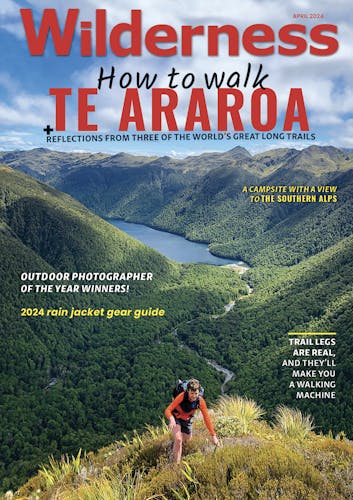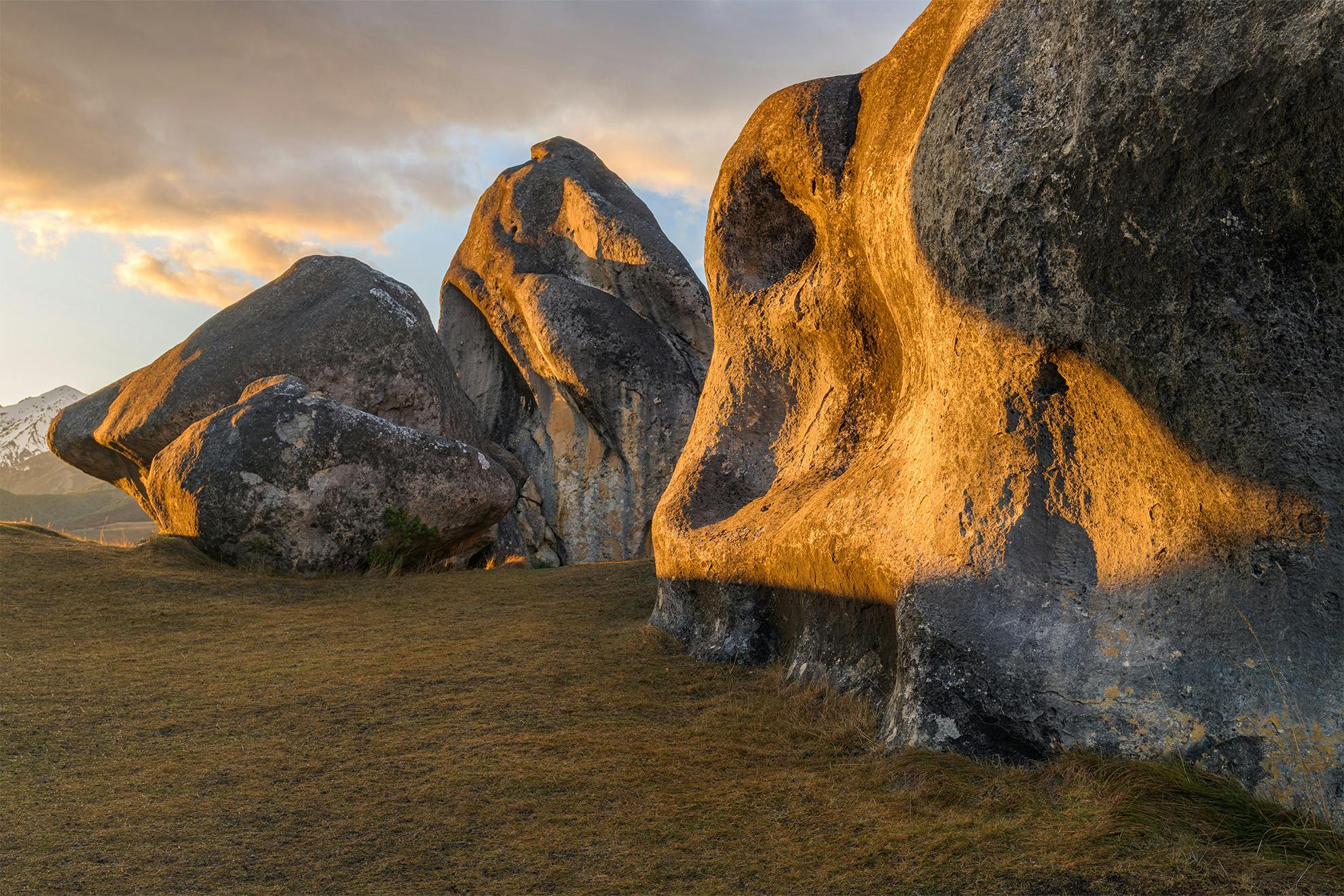Six spectacular limestone features to explore.
Limestone is formed from the remains of calcareous sea creatures that settled in layers on the ocean floor and were compacted over eons. It can be eroded by the action of water. Composed of calcium, the rock is susceptible to chemical changes because of rainwater’s slight acidity. When uplifted by geological processes, limestone features can take on marvellous forms and shapes. Some of the most iconic landscapes in New Zealand are composed of this rock. Here are some of the best to visit on foot.
1. Mangapohue Natural Bridge, King Country
The King Country is famous for its outcrops of limestone and, of course, the Waitomo Caves. In the Marokopa River a collapsed cave system has left two natural arches, one of which is 17m high. This easy 30-minute loop walk begins at a small car park on Te Anga Road and has plenty to interest day walkers and families. It passes through a limestone gorge and under a natural bridge. Pay attention to safety barriers, especially with children.
The nearby Marokopa Falls are also worth a visit, perhaps on the same day.
2. Bell Rock, Hawke’s Bay
Bell Rock is an iconic limestone lookout reached via a medium-intensity walk in Boundary Stream Mainland Island Reserve. Its name is derived from the distinctive shape of the limestone feature.
The track weaves through mixed podocarp-hardwood forest dominated by gnarled beech and mountain holly. There are panoramic views over this low canopy, and also a great variety of birds such as tūī, bellbird and kererū, all protected by an effective predator trapping programme.
Expansive views from the top of the range include Mahia Peninsula, Te Kooti’s Lookout and the Kaweka Range. The latter part of the walk and the lookout itself are exposed to strong winds. While the track is largely fine for fit children, pay attention at the lookout, where there are significant drops from the cliff edge.
3. Castle Point, Wairarapa
This commanding limestone reef juts into the Pacific Ocean and faces the full onslaught of sometimes gigantic waves. From Castle Point township, an easy walk leads across sand to the reef, where stairs and boardwalks climb to a slender lighthouse. New Zealand fur seals and sea birds often congregate here. Although it’s exposed to ferocious winds, this is a fascinating 2–3hr walk. Take heed of any warnings of bad weather; several anglers have been tragically swept from the rocks by freak waves.
4. Pororari River Canyon, Paparoa National Park
Limestone cliffs layer the Pororari River Canyon and tower above the subtropical forest and the Paparoa Track. The cliffs are a spectacular start or finish to the Great Walk, en route to Pororari Hut. Allow 4–5hr one way to the hut; alternatively, the lower valley can be tackled in a half-day walk. While other limestone canyons feature prominently in the national park, the Pororari is iconic. Access is from near Punakaiki on SH6.
5. Castle Hill/Kura Tawhiti, Canterbury
The towering limestone cliffs and boulders of Castle Hill, now part of the Kura Tawhiti Scenic Reserve, are a popular stopping point on the way to Arthur’s Pass. Māori used to shelter under the dry limestone overhangs as they carried heavy loads of pounamu from the coast. Later came gold seekers and pioneering farmers. These days rock climbers enjoy the exceptional collection of world-class bouldering problems. Access is via a 15min walk across farmland from the car park on SH73. You could spend a whole day exploring this fascinating area, having a picnic, or testing yourself on the sloping climbs.
6. Elephant Rocks, North Otago
These fascinating limestone cliffs, mazes and castle-like outcrops are similar to those of Kura Tawhiti. Narnia movies fans might recognise scenes from the film Prince Caspian. Enthusiasts could spend a half day exploring the area, but 15 minutes will give you a good taste. Keep a lookout for the elephant-shaped rock. Access is from the Waitaki Valley. From a signpost near Duntroon, take a private farm road to the car park. Public access to the rocks entails a short walk across farmland. Entry is by donation.








